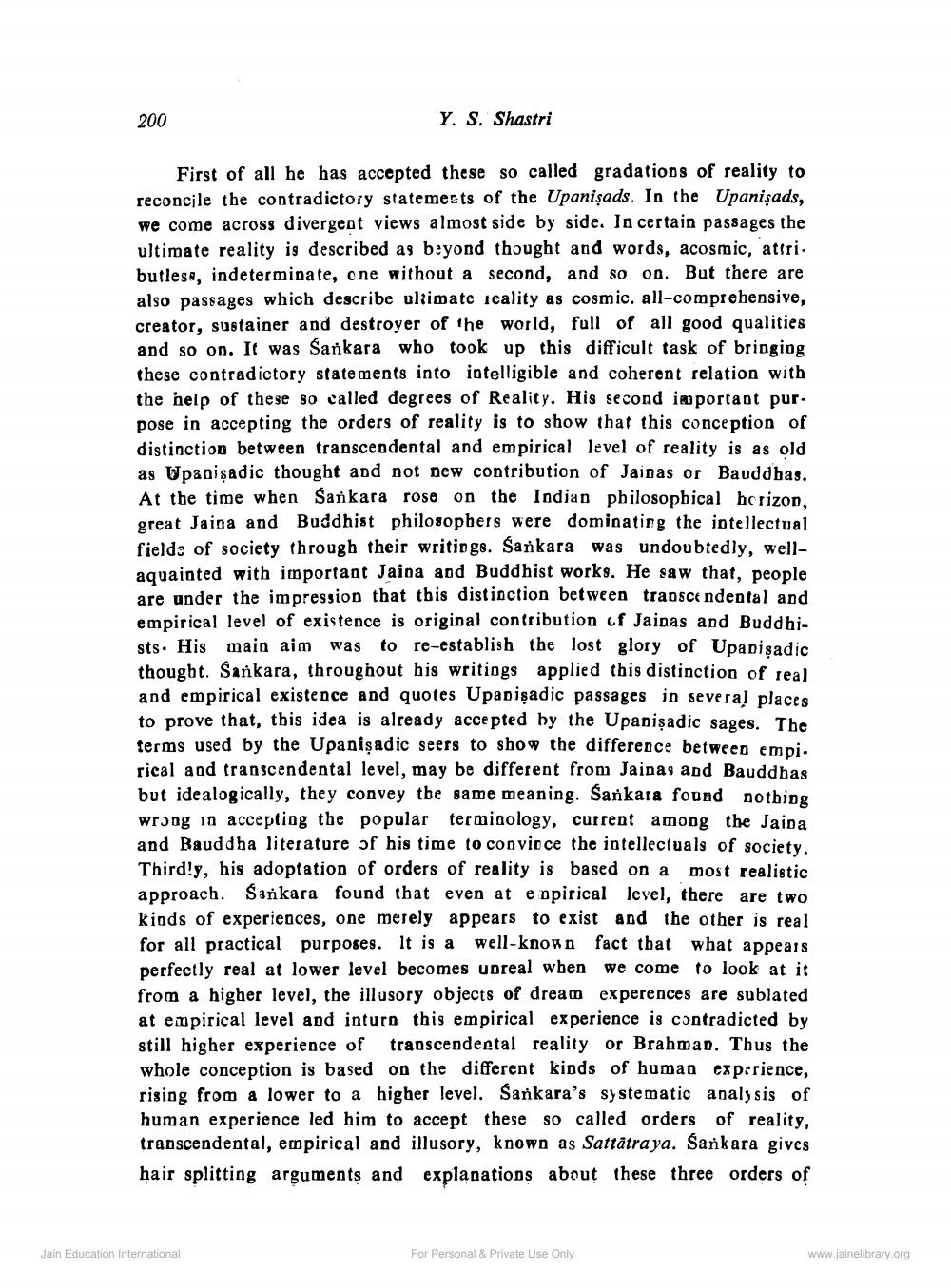________________
200
Y. S. Shastri
First of all he has accepted these so called gradations of reality to reconcile the contradictory statements of the Upanişads. In the Upanişads, we come across divergent views almost side by side. In certain passages the ultimate reality is described as beyond thought and words, acosmic, atiri. butless, indeterminate, one without a second, and so on. But there are also passages which describe ultimate reality as cosmic, all-comprehensive, creator, sustainer and destroyer of the world, full of all good qualities and so on. It was Sankara who took up this difficult task of bringing these contradictory statements into iotelligible and coherent relation with the help of these so called degrees of Reality. His second important purpose in accepting the orders of reality is to show that this conception of distinction between transceodental and empirical level of reality is as old as Upanişadic thought and not new contribution of Jaipas or Bauddhas. At the time when Sankara rose on the Indian philosophical horizon, great Jaina and Buddhist philosophers were dominating the intellectual fields of society through their writings. Sankara was undoubtedly, wellaquainted with important Jaina aod Buddhist works. He saw that, people are under the impression that this distinction between transcendental and empirical level of existence is original contribution of Jainas and Buddhists. His main aim was to re-establish the lost glory of Upanisadic thought. Sankara, throughout his writings applied this distinction of real and empirical existence and quotes Upadişadic passages in several places to prove that, this idea is already accepted by the Upanişadic sages. The terms used by the Upanişadic seers to show the difference between empi. rical and transcendental level, may be different from Jainas and Bauddhas but idealogically, they convey tbe same meaning. Sankara found nothing wrong 10 accepting the popular terminology, current among the Jaina and Bauddha literature of his time to convince the intellectuals of society. Thirdly, his adoptation of orders of reality is based on a most realistic approach. Sankara found that even at enpirical level, there are two kiods of experiences, one merely appears to exist and the other is real for all practical purposes. It is a well-known fact that what appears perfectly real at lower level becomes upreal when we come to look at is from a higher level, the illusory objects of dream experences are sublated at empirical level and inturn this empirical experience is contradicted by still higher experience of transcendental reality or Brahman. Thus the whole conception is based on the different kinds of human experience, rising from a lower to a higher level. Sankara's systematic analysis of human experience led him to accept these so called orders of reality, transcendental, empirical and illusory, known as Sattatraya. Sankara gives hair splitting arguments and explanations about these three orders of
Jain Education International
For Personal & Private Use Only
www.jainelibrary.org




